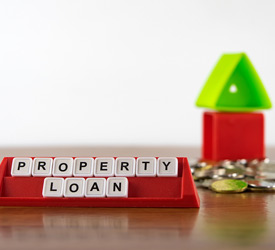Life is full of uncertainties: it is not necessary that it will always go as planned. Even if one has carefully crafted their financial goals and savings, even a single unfortunate circumstance, like a medical emergency, can be enough to hit one’s finances. Unforeseen emergencies are not capable of draining your health, but can also rob you of your wealth i.e. savings or insurance limits. During such a crisis, a property, that you own, can come to your rescue, and the best part is it can save you without you even having to liquidate your valuable asset.
A sudden requirement of large funds may drive you to break investments or sell assets, such as gold, jewellery, which otherwise could have fetched better returns in the longer run.
Thanks to a product called property loan, you need not do that. A property loan helps you avail of funds without selling your property or breaking your savings.
A self-owned completely constructed residential or commercial property can be used to avail of a LAP loan. As the name suggests, the property is pledged as collateral to the lender to receive funds against the property value. A LAP loan can be availed of by both salaried as well as self-employed individuals for any foreseen or unforeseen outlays, such as sponsoring the education of a child, funding a child’s marriage, or for business expansion. The lenders, typically, offer loan amounts up to 70% of the property’s market value. In some cases, they might even lend up to 80% of the estate value, depending on the age and location of the property along with the individual’s eligibility and capability to repay.
Eligibility Criteria for LAP
The eligibility criteria on property loan vary from lender to lender. Key factors considered for determining the eligibility include the applicant’s income level, age, and employment status. These criteria help gauge the financial capability of an individual. Since the sums involved are often large, repayment history of past or ongoing loans, including credit card outstanding, are also taken into consideration. This helps the lender know a borrower’s EMI paying capacity. For better chances of LAP loan approval, the applicant’s CIBIL score should be above 700 points, which, in turn, is a reflection of one’s good track record in repaying loans. A good score can help negotiate better loan against property interest rates. The loan is provided only on a non-disputed property that has all the documents of ownership and doesn’t have loans running on it.
Understanding the LAP EMI Calculator
If you don’t know how much EMI you will be able to afford, you need not worry, the LAP EMI calculator is exactly the tool you need to clear your dilemma. EMI calculators are easily available online on several lender and aggregator websites. The EMI calculator will help you in developing a better understanding the total interest cost, plan future repayments, and compare loan against property interest rates of different lenders. All one needs to do is punch in the required principal amount, tenor, and LAP interest rates of that particular lender. By just entering these details, the calculator will automatically calculate and give you details of your monthly instalments.
Property Loan vs. Personal Loan: Which Is the Better Option?
A property loan is often the preferred choice over a personal loan as the tenor for LAP is up to 20 years vs five years on the latter. Lower LAP interest rates are another advantage over a personal loan.
Consider this: there is a medical emergency and you have exhausted your insurance limit and your savings in the treatment of your loved one and are still short of Rs.20,00,000. In this scenario, you could either opt for an unsecured personal loan or a loan against property, if you own one. If you can afford a high EMI, then go for a personal loan else LAP is any day the preferred option. Also, note that if your income is moderate and there are already several loans running, then the lender might not be able to provide a high amount of personal loan. Here is how the EMIs would vary in both situations.
For a personal loan of Rs.20,00,000 for a tenor of 5 years (maximum tenor available in personal loan) on the interest rate of 13% the EMI that needs to be paid is Rs.45,506.
In case of a property loan for a loan of Rs.20,00,00 on an interest rate of 11% for a tenor of 10 years, the EMI payable will be Rs.27,550, which is half of what you would have paid on a personal loan. Though the overall interest amount would be higher in the case of LAP, it is worth highlighting that the interest rate itself will be lower on LAP and one can always repay earlier to reduce the interest cost as and when additional resources are available.

